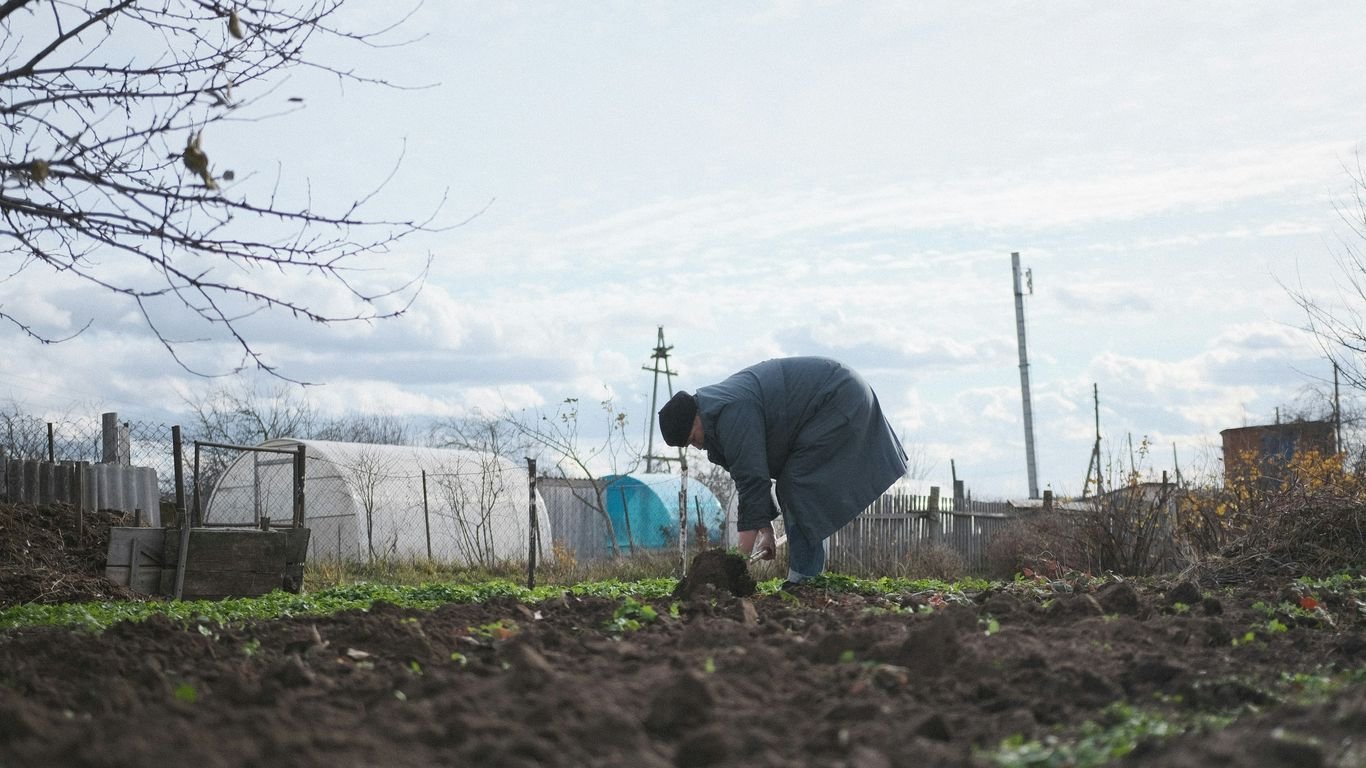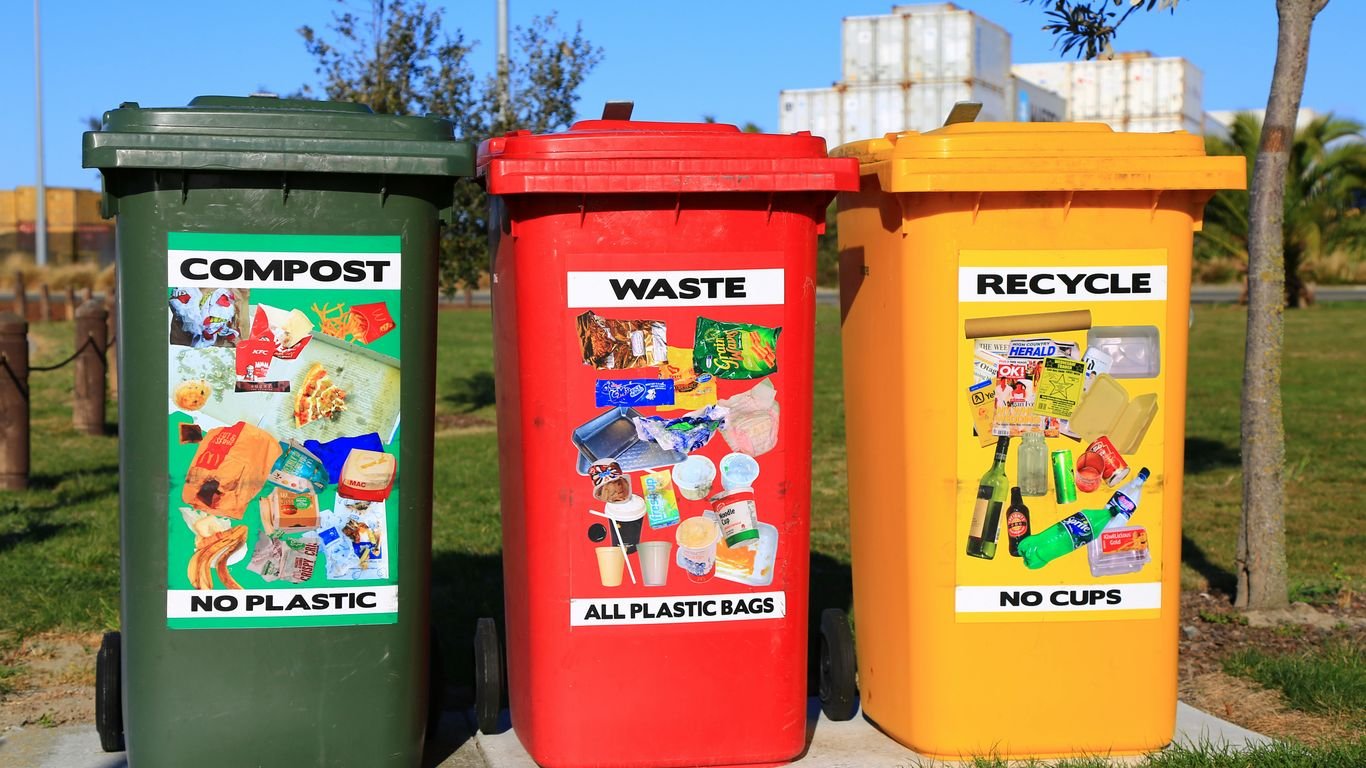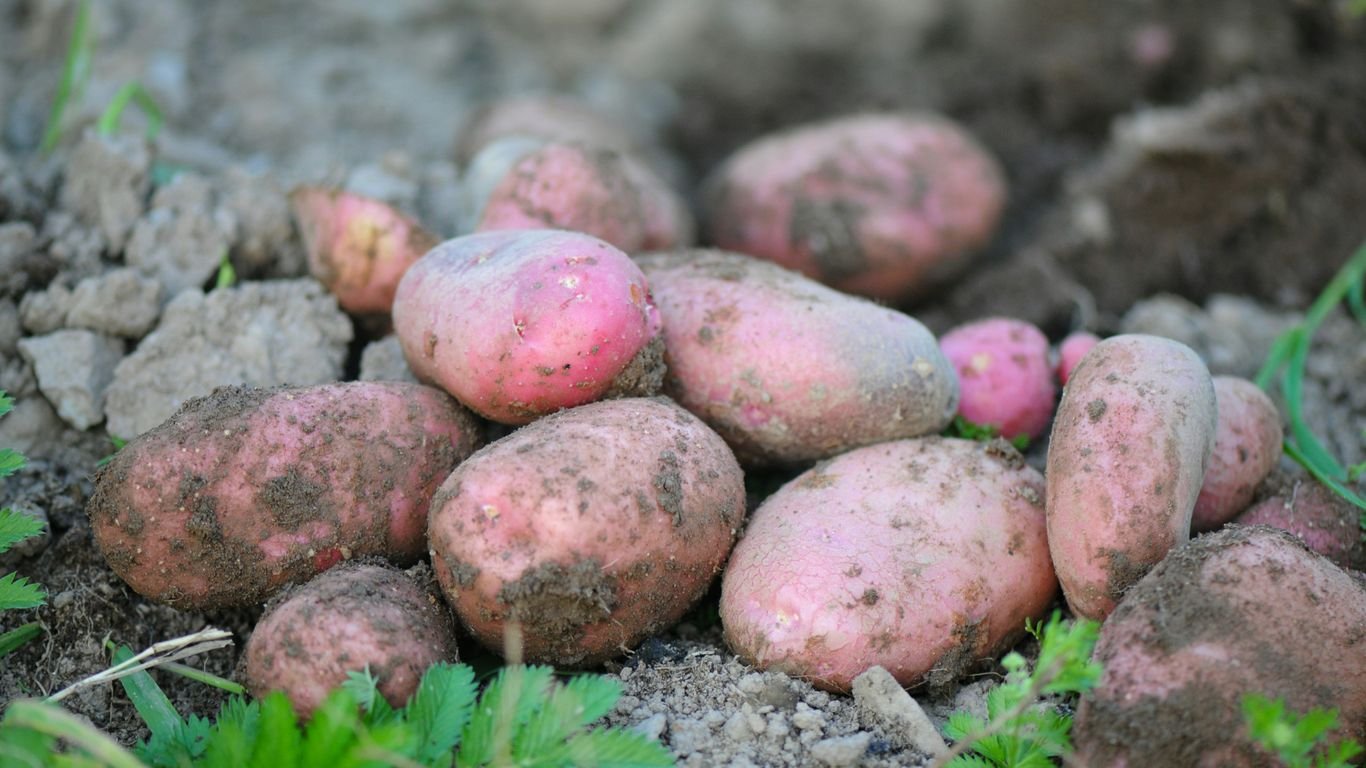February Preserving Guide: Early Prep for Spring Harvests

We’re getting ready for spring harvests, and February is the perfect time to start thinking ahead. It’s a bit early for most of our gardens, but we can use this time to get our supplies in order and plan out what we want to preserve. This february preserving guide will help us get organized and make the most of our future harvests.
Key Takeaways
- Stock up on all your preservation supplies now to avoid last-minute rushes when your harvest is ready. This includes jars, lids, vinegar, salt, and any other specific items needed for your chosen methods.
- Familiarize yourself with different preservation techniques like canning, freezing, drying, and fermenting. Understanding how each method works will help you choose the best approach for different types of produce.
- Schedule dedicated time for preservation. Even if it means adjusting your usual routine, setting aside specific times will help you manage your workload efficiently during busy harvest periods.
- Identify your family’s favorite preserved foods and plan to grow or purchase enough to meet your needs year-round. Versatile preserves, like applesauce, can be used in many different dishes, maximizing your efforts.
- Explore local sources for produce if you don’t grow your own. Community Supported Agriculture (CSA) programs, farmers’ markets, and U-pick farms offer fresh, seasonal options to preserve.
February Preserving Guide: Getting Ahead of the Curve
February might seem early, but it’s the perfect time to start thinking about preserving the bounty that will soon be heading our way. We can use this month to get organized and prepare for the busy preserving season ahead. It’s all about getting ahead of the curve so we’re not overwhelmed when spring harvests start rolling in.
Stocking Up On Essential Preservation Supplies
Before we get too deep into preserving, we need to make sure we have all the right tools. It’s no fun to realize you’re out of canning jars or have a dull dehydrator blade when your tomatoes are at their peak. Let’s take stock of what we have and what we need. Think about jars, lids, rings, vinegar, sugar, salt, spices, and any special equipment like dehydrators or vacuum sealers. Checking your supplies now means you won’t be scrambling later. We can also use this time to check on last year’s preserved goods to ensure they’re still in good condition.
Understanding Your Preservation Methods
There are so many ways to preserve food, and each has its own strengths. We can choose methods based on the type of produce we have and how we plan to use it later. For instance, some vegetables are great for dehydrating, turning into powders or chips, while others are better suited for canning or freezing. It’s helpful to know which methods work best for different items. For example, leafy greens can be dehydrated, but they don’t do well with canning or fermentation. Understanding these differences helps us make the most of our harvest. You can find a great overview of different techniques in resources that detail 10 food preservation methods.
Scheduling Your Preservation Time
Preserving food can take a lot of time, especially when you’re dealing with large harvests. By creating a schedule now, we can break down the tasks into manageable chunks. We can look at what produce is coming up and plan when we’ll tackle each preservation project. This might involve setting aside specific days or even just a few hours each week. Having a plan helps us stay on track and prevents that feeling of being buried under a mountain of zucchini. It’s also a good idea to factor in things like weather, as some methods are easier to do when it’s cooler outside.
Seasonal Produce Spotlight For February

February might seem a bit early to be thinking about big harvests, but it’s actually a prime time for getting ahead of the curve, especially if you’re in a milder climate. We’re talking about those cool-season crops that are either ready to pick or just starting to show their potential. It’s a great month to assess what’s available and start planning our preservation projects.
Cool-Season Vegetables Ready for Harvest
Even as winter winds down, many hardy vegetables are still thriving or nearing their peak. We often see things like kale, spinach, and various lettuces still producing well. Depending on your specific location and how you’ve managed your garden, you might also find broccoli and cabbage that have overwintered nicely. These are perfect for immediate use or for preserving through methods like freezing or quick pickling. Don’t overlook root vegetables that might still be in the ground, too!
Fruits Available in Early Spring
While February isn’t exactly peak fruit season for most of us, it’s the time when citrus fruits are often at their best. If you’re in a region that grows them, now is the time to enjoy oranges, grapefruits, and lemons. For those in slightly warmer climates, you might start seeing early strawberries or rhubarb making an appearance. These early spring fruits are fantastic for jams, jellies, or even some simple water bath canning to capture that fresh flavor. We’re always looking for ways to extend that taste of spring, and preserving these fruits is a great start.
Herbs and Flowers to Consider
Don’t forget about the smaller players in the garden! February is a good time to think about perennial herbs that are starting to wake up. Mint, rosemary, and thyme can often be harvested for drying, which is a simple way to preserve their flavor for the rest of the year. Some hardy flowers, like pansies or violas, might even be blooming, and many of these can be candied or dried for decorative purposes on baked goods or in teas. It’s amazing what you can do with a little bit of greenery and a few petals.
It’s easy to get caught up in the big-ticket items, but sometimes the most rewarding preservation comes from the smaller, often overlooked, parts of the garden. Thinking about herbs and edible flowers now means you’ll have unique flavors and beautiful garnishes ready when you need them later.
Choosing Your Preservation Path
When it comes to preserving our bounty, we have a few different routes we can take. Each method has its own charm and works best for different types of produce. It’s not a one-size-fits-all situation, and figuring out what works for us has been a fun part of the process.
Canning: A Time-Tested Favorite
Canning is a classic for a reason. It’s a fantastic way to store food long-term, keeping it shelf-stable for months. We love canning things like tomatoes, peaches, and green beans. The key is to follow tested recipes precisely, especially for low-acid foods, to ensure safety. For high-acid foods like fruits and pickles, water bath canning is usually sufficient. For vegetables, meats, and soups, we need to use a pressure canner, which reaches higher temperatures to kill off any nasty bacteria. It takes a bit of an upfront investment in jars and equipment, but the results are so rewarding.
Freezing: Quick and Easy Storage
If you’re short on time or just starting out, freezing is our go-to. It’s incredibly simple: wash, prep, pack, and freeze. We find that most fruits, berries, and blanched vegetables freeze really well. Using moisture-proof containers or vacuum-sealed bags helps prevent freezer burn and keeps our food tasting fresh. It’s a great way to capture that peak-season flavor without a lot of fuss. We’ve found that freezing is particularly good for leafy greens like spinach and kale, which can be blanched and then frozen in portions for later use.
Drying and Dehydrating Techniques
Dehydrating is another method we enjoy, especially for things like herbs, apples, and even some vegetables to make chips. Using a dehydrator or even a low oven setting allows us to remove moisture, concentrating flavors and making foods last. Dried fruits are great for snacks or adding to baked goods, and dried herbs are a pantry staple. We’ve learned that drying herbs at lower temperatures, around 100°F, helps preserve their essential oils, keeping them potent and flavorful. For fruits and vegetables, temperatures between 120°F and 140°F work best to dry without cooking them.
Fermentation and Pickling Basics
Fermenting and pickling are methods that add a tangy, probiotic punch to our food. Think sauerkraut, kimchi, and pickles. These processes use salt and beneficial bacteria to preserve food and create unique flavors. It’s a bit more hands-on, involving packing jars and letting them sit at room temperature for a while, but the results are delicious and good for our gut health. For sauerkraut, we simply shred cabbage, add salt, massage it until it releases liquid, pack it into jars, and let it ferment. The salt is important because it encourages the good bacteria while keeping the bad ones away. We’ve found that a simple brine ratio of 2% salt to cabbage weight is a good starting point for many ferments.
Maximizing Your Harvest’s Potential

As we look towards spring, it’s smart to think about how to make the most of whatever produce we manage to preserve from the cooler months or even plan for the upcoming season. Getting the best out of our harvest isn’t just about quantity; it’s about quality and smart preparation.
Harvesting Fruits for Peak Pectin
When we’re picking fruit, especially for jams and jellies, timing is everything. Fruit that’s just a little underripe, not quite green but not fully ripe either, tends to have more pectin. This natural gelling agent is what gives jams and jellies their lovely set. So, if you’re aiming for a perfect set without added commercial pectin, picking a bit early can really help. We also learned that mixing fruits with high pectin levels (like crabapples) with those that have lower levels (like sweet cherries) can be a clever way to boost the natural pectin content in our preserves without affecting the flavor too much. It’s a simple trick that can make a big difference in the final texture of our fruit spreads.
Tips for Preserving Leafy Greens
Leafy greens can be a bit tricky to preserve, but they’re so good for us. When we’re canning vegetables, we often end up with small, usable bits of greens that don’t quite fit neatly into jars. Instead of tossing them, we can blanch and freeze these odds and ends. They’re perfect for adding to soups, stews, or smoothies later on. Don’t underestimate the power of a good blanching and quick freeze for preserving the nutrients in your greens.
Utilizing Leftovers and Odds and Ends
It’s easy to have small amounts of produce left over after a big preservation session. We’ve found that these bits and pieces are often perfect for making stocks, broths, or even small batches of infused vinegars. For instance, those slightly bruised apples that aren’t ideal for canning can be turned into applesauce or cider. Even vegetable scraps, like carrot peels and onion skins, can be saved in the freezer to make a flavorful vegetable broth later. It’s all about reducing waste and getting the most value from everything we grow or buy. We’ve even started a dedicated container in the freezer just for these usable scraps. It really helps keep things organized and prevents good produce from going to waste. Remember, even the parts we might normally discard can be transformed into something delicious and useful, like using ornamental grass stems for winter interest in the garden until spring pruning time comes around [ecc5].
Planning for Preservation Success

Getting your preservation game plan together now means you’ll actually use what you harvest. We’ve all been there, right? We get excited in the summer, preserve a ton of stuff, and then half of it sits in the back of the pantry, forgotten. Let’s make this year different. Thinking ahead about what we actually eat and how we use it is key to avoiding waste and maximizing our efforts.
Identifying Your Family’s Favorite Preserves
First things first, let’s talk about what disappears from our plates the fastest. What fruits and veggies does your family genuinely love? For us, it’s things like tomato sauce, green beans, and anything pickled. We aim to preserve enough of these staples to last us the entire year, so we don’t have to buy them from the store. It’s also smart to think about versatility. For example, applesauce is great on its own, but we also use it in baking and even in some sauces. That makes one preserved item go a lot further than, say, a jar of apple jelly that’s only good for one thing.
Creating a Year-Round Preservation Plan
Once you know what your family enjoys, you can start mapping out your preservation year. Think about what’s in season and when. This helps you buy in bulk when prices are lowest. Partnering with neighbors to split cases from farmers’ markets or joining a community supported agriculture (CSA) share can really cut down on costs. We keep a simple journal of what we store, when we stored it, and when we plan to use it. This way, when we’re planning meals, we know exactly what we have on hand before we even think about going to the grocery store.
Making Preserves Versatile for Multiple Uses
This is where we really get smart about preservation. Instead of just preserving something for one specific dish, try to think of ways it can be used in multiple meals. For instance, if you’re preserving corn, you could freeze it for corn on the cob, dehydrate some for adding to soups and stews, or even ferment a small batch for a unique side dish. This approach not only reduces waste but also adds variety to our meals throughout the year. It’s about making our preserved goods work harder for us, ensuring we enjoy the fruits (and vegetables!) of our labor all year long.
Beyond Your Backyard: Sourcing Produce

Even if your own garden is still just a hopeful thought or a small patch, you can still get in on the preserving fun. We don’t all have acres to grow our own food, and that’s totally okay! There are some fantastic ways to get your hands on fresh, seasonal produce to stock your pantry. Connecting with local sources means you’re getting food at its peak freshness, often picked just for you.
Connecting with Community Supported Agriculture (CSA)
Think of a CSA as a subscription box for farm-fresh goodies. You pay a farm upfront for a share of their harvest, and in return, you get a box of whatever they’re growing and harvesting that week. It’s a great way to support local farmers and get a diverse range of produce. You can usually find CSAs in your area by searching online – sites like LocalHarvest are a good starting point.
Visiting Local Farmers’ Markets
Farmers’ markets are a treasure trove! Not only do you get to see and smell all the amazing seasonal produce, but you can also chat directly with the farmers. Ask them about their growing methods, what’s coming into season next, and get tips on how to best use their produce. It’s a direct connection to where your food comes from.
Supporting Local Growers and U-Pick Farms
Don’t underestimate the power of simply asking around. Your neighbors might have an overflowing apple tree or a bumper crop of zucchini they’re happy to share or sell. U-pick farms are another excellent option. You get to do the harvesting yourself, which often means a lower price, and it’s a fun activity for the whole family. Plus, some farms might even trade produce for your help!
Here’s a quick look at how these options stack up:
| Source | Pros | Cons |
|---|---|---|
| CSA | Supports local farms, diverse produce | Less choice in what you receive |
| Farmers’ Markets | Direct farmer interaction, peak freshness | Can be more expensive, weather dependent |
| U-Pick Farms | Often cheaper, fun activity | Requires your own labor, limited variety |
Getting your produce from local sources not only guarantees freshness but also cuts down on the miles your food travels. This means less fuel used and a smaller carbon footprint, which is a win-win for everyone.
Wrapping Up Our February Prep
So, we’ve talked about getting our ducks in a row for the upcoming harvest season, and honestly, it feels good to be a step ahead. It’s easy to get caught up in the day-to-day, but taking a little time now to figure out what we want to preserve and making sure we have the right supplies can save us a lot of headaches later. Remember, even small steps like checking our canning lids or making sure we have enough pickling salt can make a big difference when everything is ready to be picked. Let’s use this February time wisely so we can truly enjoy the fruits (and veggies!) of our labor all year long.
Frequently Asked Questions
How do we figure out what fruits and veggies are in season?
We start by looking at charts that show what’s typically in season each month. Then, we adjust that based on our own area’s weather and when things usually grow there.
What kind of produce can we get during the winter months?
In the colder months, we can find things like squash, Brussels sprouts, and sweet potatoes. Plus, we can enjoy all sorts of citrus fruits.
Where can we buy produce that’s grown nearby and in season?
If we don’t grow our own, we look for local farmers, community-supported agriculture (CSA) programs, and farmers’ markets. It’s a great way to support local growers.
Why is it good to eat fruits and vegetables when they are in season?
Eating what’s in season means we get the best taste and freshness. It also helps the farmers in our community and is generally better for the environment.
What are some good ways to preserve our seasonal produce?
We have many options like canning, drying, fermenting, and freezing. There are lots of tutorials out there to help us learn these methods.
Can we still enjoy fruits and vegetables even when they’re not in season?
Absolutely! That’s the best part about preserving food. It lets us save our harvests so we can enjoy them all year long.






